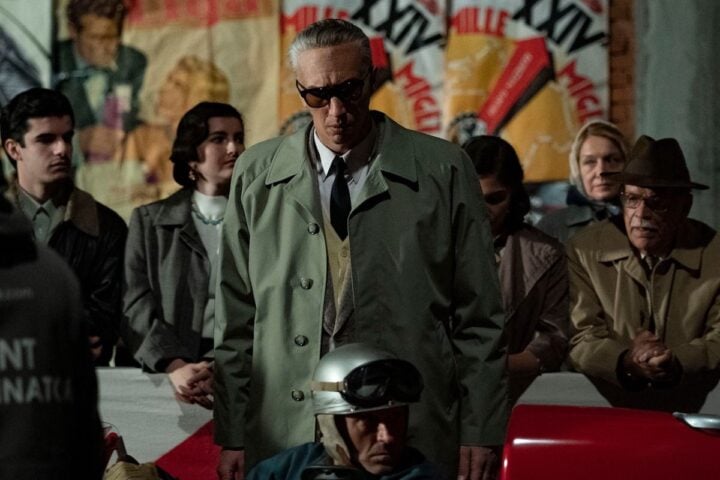Kevin Macdonald’s High & Low: John Galliano is another hagiography in an increasingly long list of public relations exercises masquerading as substantial fashion profiles. Except this documentary is a more perverse exercise in self-celebration than its predecessors, as it shamelessly announces from the very start that it’s an attempt at atonement for disgraced designer John Galliano, who was widely condemned in 2011 for racist and antisemitic rants.
High & Low opens with the case that triggered Galliano’s public downfall, all but promising that it will confront his demons head on and leave no stone unturned. Instead, it enlists Galliano’s high-profile friends and former colleagues—among them Kate Moss, Naomi Campbell, Penélope Cruz, Charlize Theron, and, of course, Anna Wintour—to make the case that it wasn’t really “John” talking at the Paris café La Perle when he used expressions such as “fucking ugly Jewish bitch” and “fucking Asian bastard” to refer to customers. Rather, it was his drug addictions.
In the film, we’re told in no uncertain terms that Galliano was from a very young age just an astonishingly gifted artist entirely devoted to the non-intellectual aspects of his craft. He never considered consequences, only the surface of things. As a result, we’re asked to believe that the 63-year-old designer remains a naïve child playing dress up, who only really cares about making beautiful artifacts, not icky things like money, or perpetuating cultural appropriation or mocking the homelessness (the modus operandi behind many of his collections).
The thesis that Galliano’s love for sartorial experimentation is so great that it made his runway shows immune to social-political meaning never lands outside one telling moment where the designer states that the authenticity of his approach eventually “became more constructed.” The other talking heads certainly have a harder time articulating this point with substance, given the vagueness of their superlatives. Which may be why High & Low eventually leans on a medical authority to assert what Galliano’s celebrity friends can’t back up, with French psychiatrist Boris Cyrulnik promptly anointing the designer with the status of victim—of his addictions, his dysfunctional background, and the excessive privileges that his genius secured him.
As if that weren’t enough, the film intercuts at times between Galliano and images from one of his noted influences, Abel Gance’s 1927’s silent epic Napoleon, to underline what Macdonald sees as the designer’s “Napoleonic display of ego.” But there comes a point where Galliano questions the degree to which the filmmaker is pushing that narrative, perhaps unsure of the extent to which the comparison between himself and Napoleon can be truly reparative. One imagines that he prefers the narrative that his fall from grace was some kind of unconscious attempt at “social suicide,” triggered by his alcoholism, drug abuse, and workplace burnout, all stemming from the fact that the effeminate son of a plumber from Gibraltar who grew up in South London was never quite accepted by Parisian fashion’s crème de la crème.
Lost in the midst of so much devotion for the film’s subject isn’t just the hope for a substantive account of what Galliano has learned in the process—though, to be fair, that could be nothing at all, given that he literally says at one point that he still doesn’t understand what happened—but of his talent. Though the film includes archival footage of his runway shows—stretching all the way back to his first one in 1984—influenced by French revolutionary aesthetics, there’s hardly any meaningful time spent discussing why his designs were particularly revolutionary.
Worst of all, the camera never lingers on Galliano during the designer’s extended talking-head interview in a way that feels as if it’s trying to understand him beyond the “constructed” claims that he makes about himself. It doesn’t grapple with the designer’s ambiguities or contradictions because it doesn’t really capture them in the first place. The camera, then, remains faithful to the most constrictive of setups and contracts, positioned head on like a cellphone might record someone who, having been targeted by social media vitriol, gestures at a mea culpa.
Since 2001, we've brought you uncompromising, candid takes on the world of film, music, television, video games, theater, and more. Independently owned and operated publications like Slant have been hit hard in recent years, but we’re committed to keeping our content free and accessible—meaning no paywalls or fees.
If you like what we do, please consider subscribing to our Patreon or making a donation.




